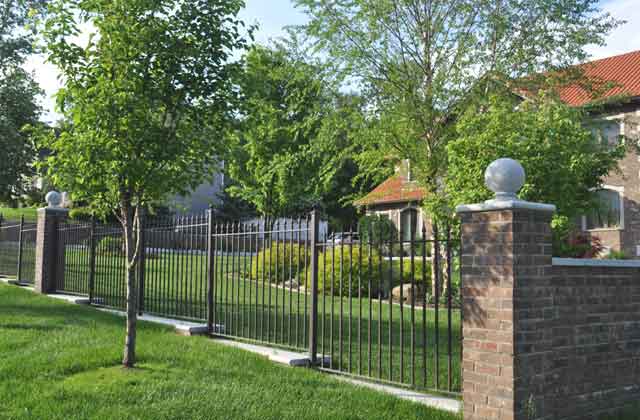 It's easy to research the style of fencing you want based on how you'll use it. Then you can sort out which of the many fence materials you prefer. It's also important to give some thought to how your new fence will affect your neighbors, so consider how you can make good neighbor fences.
It's easy to research the style of fencing you want based on how you'll use it. Then you can sort out which of the many fence materials you prefer. It's also important to give some thought to how your new fence will affect your neighbors, so consider how you can make good neighbor fences.
My fence experience comes from helping my handyman customers in southern NH. I haven't had many fenced yards. Small lots in California seem to be a driver so twice there, and I loved adding a dog door so we didn't have to walk the dog all the time. More recently we bought a house in Arizona which has a fence, and that's a safety requirement because of the swimming pool.
My personal preference is to keep spaces open so everyone can enjoy the views. So one thing you'll want to do before installing a fence, is drive around your neighborhood to see what's typical.
 Good Neighbor Fences Make a Difference
Good Neighbor Fences Make a Difference
 When I read Myrl Jeffcoat’s blog post about good neighbor fences, Staying Neighborly with Good Neighbor Fences, I was intrigued. Myrl’s story made me realize that putting up a fence on (or very near) a property line is a complicated decision.
When I read Myrl Jeffcoat’s blog post about good neighbor fences, Staying Neighborly with Good Neighbor Fences, I was intrigued. Myrl’s story made me realize that putting up a fence on (or very near) a property line is a complicated decision.
Mryl's story had a happy ending as her neighbor created a special window into his yard, so her dog could see who was making the noise on the other side of the fence (and therefore wouldn’t bark).
 Why Neighbors Might Not Install a Fence
Why Neighbors Might Not Install a Fence
Our neighbor fence story turned out differently. We watched our neighbors build a six foot tall fence around two sides of their backyard, to provide privacy from the street and block another neighbor's parking lot. They were planning to put the same stockade fence between our two yards … until we started a discussion with them.
We explained that we’d prefer no fence, or one that was partially open versus one that would block our view. Our neighbors agreed to hold off on the fence separating our backyards. For several years we discussed different fence styles and never found one we both liked. In face we got used to the shared backyard, so you’re probably wondering where’s the problem?
We've since sold our house in Portsmouth, NH and while we were there, they never put up a fence.
The potential problem would have involved where the fence went. There was a beautiful tree on the property line, so our neighbors before we moved there, had built a short stone wall (maybe one foot high) between our respective yards. The problem was the stone wall was really on our property. When looking at the contour of the property, in order to keep the stone wall in tact, the new fence would need to go on our property or block their view of the stone wall.
After reading Myrl’s article and another one she referenced, I realized there were a lot of questions that needed answers before any type of fence could be installed.
- Who would be legally responsible for maintaining the fence?
- How would we protect the legal size of our property, if we allowed the fence to cut off some of the land that we owned?
- Once home owners agree, who pays to document the new “agreed to” boundary?
- If you don’t document the changed boundary, how do you communicate your home's property to future owners?
 There are many lessons around putting up a fence, or inheriting an existing fence when you buy a house. If your lot is fairly small, you might want to get a survey to verify your property boundaries. And if you want (or need) to understand more about the laws regarding fences and neighbors, check out Nolo's book, Neighbor Law – Fences, Trees, Boundaries and Noise (just ordered my copy).
There are many lessons around putting up a fence, or inheriting an existing fence when you buy a house. If your lot is fairly small, you might want to get a survey to verify your property boundaries. And if you want (or need) to understand more about the laws regarding fences and neighbors, check out Nolo's book, Neighbor Law – Fences, Trees, Boundaries and Noise (just ordered my copy).
 Good Neighbor Fences Make a Difference
Good Neighbor Fences Make a Difference Why Neighbors Might Not Install a Fence
Why Neighbors Might Not Install a Fence



Leave a Reply